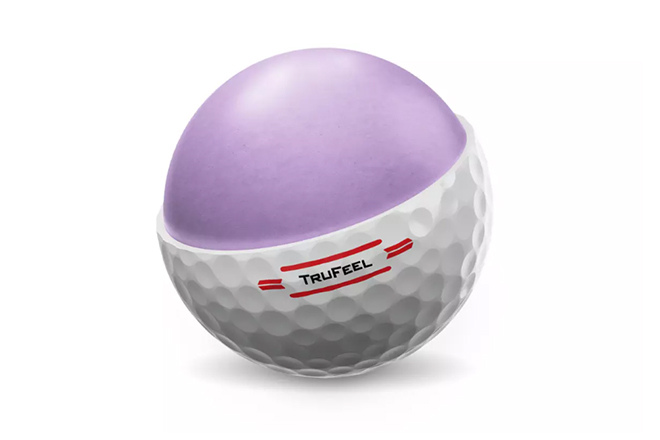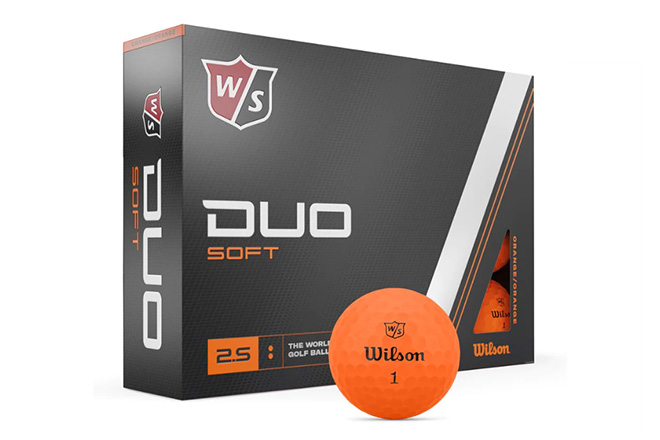What Golf Ball Should I Use? Options For All Golfer Types
Struggling with which golf ball to choose? Cut through the confusion with our comprehensive guide on “what golf ball should I use”. Aligning your playing style and skills with the perfect golf ball will elevate your game. This article will help you find the best golf ball for your swing speed, ability level, and the course conditions. Stepping onto the course with confidence you’re using the right golf equipment will lower your scores.
To play your best golf you need to match your the best golf balls to your game.
Key Takeaways
- Choose a golf ball that matches your swing speed and skill level for better performance. A high compression golf ball is best for fast swingers and slower swingers should use a low compression golf ball.
- Consider the feel of the ball upon impact which varies with compression: a soft golf ball typically offers more control while firm balls cater to stronger swings.
- Visibility is key! Colored golf balls can enhance tracking against certain backgrounds, but always account for the specific course and weather conditions.
Discovering Your Ideal Golf Ball
When it comes to golf, many will say the details are what matter. Differences in golf balls are subtle and nuanced, but these differences make a big difference. It requires knowledge about how these balls perform in different situations depending on speed and style preferences.
Most of the time it comes down to personal preference, based on your swing, ability and style. Understanding your own game will allow you to narrow down your options to make an informed choice. Finding your perfect match will come down to real world usage.
Construction: How Many Layers Do You Need?

Golf balls consist of layers or pieces to give them particular performance characteristics:
- 1 Piece – only used for putt putt golf
- 2 Piece – a large soft core with a ionomer or Surlyn cover which is hard and durable. Examples include Callaway Supersoft, Titleist TruFeel and Srixon Soft Feel.
- 3 Piece – either has a dual layer core or a large core with thin mantle. The outer cover on a 3 piece ball is usually a soft urethane.
- 4 Piece – usually has two mantle layers and are harder balls than a 3 piece ball. Examples include Titleist Pro V1x, Callaway Chrome Tour X and Wilson Staff Model X.
- 5 Piece – it’s very rare for a ball to have 5 layers. However, the TaylorMade TP5 and TP5x do, they have a large core, 3 mantle layers and a thin urethane cover.
Two piece golf balls are for to golfers who have a slow to medium swing speed and prefer forgiveness over control. Three piece balls are for more advanced players because they have more spin and workability. Four piece golf balls are for elite golfers with high swing speeds.
Golf Ball Compression: Matching Your Swing Speed

Understanding compression is essential when considering what golf ball to use based on your swing speed. Low compression golf balls compress more than high compression golf balls when they make contact with the face of the club. Low compression (or soft golf balls) are better for golfers with slower swing speeds. because you can still get the necessary compression or ‘springiness’ out of the ball when making contact. Juniors, women, seniors and other golfers with a slower swing speed benefit from a low compression golf ball.
A high compression golf ball being hit by a golfer with a slower swing speed (less than 90 miles per hour) will not compress much when you make contact, it might feel like hitting a rock. This will drastically impact distance, control and feel.
High compression or so-called ‘high comp’ golf balls are suitable for players who have quick swing speeds. The high compression matches the fast swing speed for maximum performance. A fast swing with a low compression ball will cause it to ‘over compress’ on impact. When this happens the ball will feel squishy and performance will be hindered.
Skill Level Sync: From Beginner to Pro
When it comes to golf, the ball you use should also correspond with your ability. For those who are just starting or have a high handicap, two-piece balls offer more distance and loft, vital components for improving in this sport. On the flipside, advanced players like pros might prefer multi-layer options that provide them with greater control of their shots.
Related article: What Are Golf Balls Made Of?
Shot Shaping and Spin Control
Spin is great if you have the ability to use it to your advantage, more spin can be not so great for average golfers.
Mastering spin control can enhance your game to new levels, a scratch golfer can use spin to their advantage. Higher spin can allow you to draw or cut the ball more easily, higher backspin can allow for more aggressive approach shots. However, player ability is a crucial factor when it comes to spin.
An average golfer usually does not have it in their locker to deliberately play a cut or draw when required. Most of the time an average golfer would prefer a low spin golf ball to help control
The Feel Factor: Soft vs Firm Golf Balls
Golfers with slower swing speeds tend to prefer soft golf balls which can help achieve a greater level of control and distance. Those with faster swings might appreciate firmer balls that still offer a gentle feel at impact. Those who have moderate swing speed are likely to find the most suitable ball depending on their preference and game conditions.
A softer feel when making contact is one notable benefit of using soft golf balls. They’re also ideal for precise maneuvering around the greens. On the contrary, higher compression models may suit more powerful strokes as they too can provide an agreeable sensation during play yet remain solid in performance overall.
Related article: Soft vs Hard Golf Balls
Color and Visibility on the Course

If you’ve ever been in the situation where your golf ball has become nearly impossible to track during a swing, don’t worry – you’re not alone. The color and how easily it can be seen affects play significantly on certain courses or under poor lighting conditions.
Bright orange or yellow balls are an ideal choice for clear weather as they will contrast well with their surroundings. If playing through foliage of any kind, these colors could make them harder to spot, potentially leading to even more difficulty at times due to its potential glare effect from light reflecting off them onto other surfaces when hitting shots around golfing areas.
It’s important then that while choosing a colored golf ball thought is put into just what environment it’ll mainly be played in before making such decisions.
Budgeting for Balls: How Price Influences Choice
Golfers looking for a ball which meets their budget requirements as well as performs to an adequate level should consider all of the various options available. A cheap golf ball might only cost you a couple of dollars per ball and are ideal choices for beginners and high handicappers alike.
As skill increases with each round played though, investing in pricier but more advanced models may become worthwhile, particularly if lower scores result from doing so. In this instance, it is important that the type of ball fits into both financial constraints and playing ability. Thereby ensuring satisfaction on every aspect associated with golf.
Related article: How Much Do Golf Balls Cost?
Top Picks for Every Golfer
When it comes to choosing the right golf balls, you may feel overwhelmed with so many options available on the market. You can find top performance and great value in several types of balls. Like Titleist Pro V1x, Callaway Chrome Soft, Srixon Z-Star or Bridgestone Tour BX are a few examples that meet all criteria for quality play.
Golfers with slower swings will find greater suitability with low compression balls, see our article on the best golf balls for seniors.
Best Value Golf Balls for Everyday Play
Golfers looking for good value without compromising performance need look no further than the range of golf balls available. The Callaway Supersoft, Srixon Soft Feel and Wilson Duo Contact offer great playability at a lower price tag when compared to more premium options on the market.
These balls provide not only improved distance but also excellent spin control, as well as durability during regular rounds whilst ensuring an overall softer feel throughout your game. With these features combined you can be sure that regardless of whether you’re playing casually or competitively. There are plenty of choices in terms of high-value golf balls!
Premium Selections for Serious Competitors
Players who are looking for an edge may consider investing in a premium golf ball to boost performance. These balls employ advanced technology and materials that provide better control, more distance off the tee, and improved feel on every shot.
For example, Wilson Staff Model Raw Golf Ball is designed with four layers of material including ‘V-COR’. This construction allows for an excellent balance between long drives and greenside accuracy as well as maximum spin when playing short shots, plus its tacky texture offers superior grip compared to budget options. All this adds up so you can make a difference out there without compromising due to cheap alternatives!
Tailoring Your Golf Ball to the Course
When playing golf, the specific course you’re on can impact your selection of golf ball. Course conditions such as type of grass, overall condition and weather will all have an effect on how a ball behaves when it is struck.
If the turf for instance has been made soft due to wetness, this could reduce distance and spin. Other courses that are better kept or in dryer climates will promote different flight characteristics and more roll out. If windy conditions present themselves, balls like Bridgestone B X & Srixon Z-Star XV provide improved control and performance. Their aerodynamic characteristics give penetrating flight to deal with blowing winds while still remaining viable options for playability purposes.
Enhancing Your Equipment Arsenal
Improving your golfing skills isn’t merely about selecting the right golf ball, getting the appropriate gear helps too. Here are a few essential items of equipment that could help you develop and enhance your abilities: clubs, tees, gloves and bags.
Every piece is vital to how well you perform on the course. It’s critical to pick out the suitable tools for your personal style and preferences. The correct equipment will have an impact in terms of distance, accuracy and making golf more enjoyable.
Summary
Finding the optimum golf ball requires assessing your personal swing speed, playing proficiency, and naturally how much you can afford. Whether it’s a budget-friendly option for novices or an advanced player willing to invest in high-end equipment that’ll lead to lower scores on the course. There is definitely one perfect set of balls suited specifically for you! Take advantage of this insight to enjoy your time out on the golf course with improved results.

